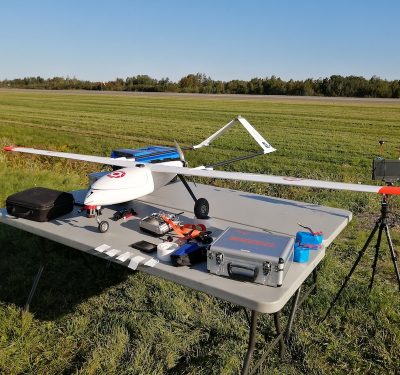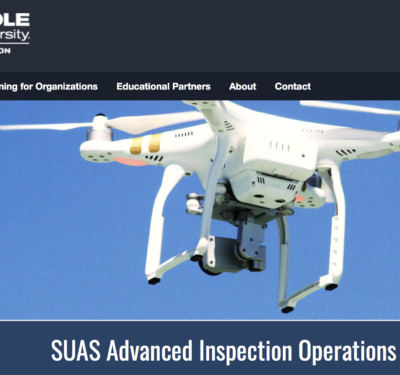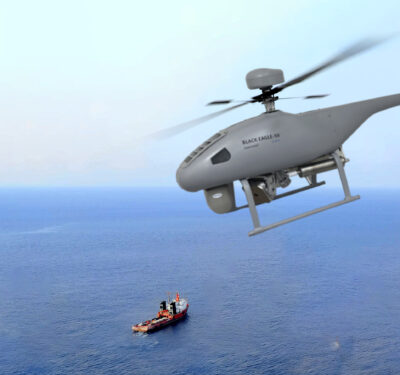After three days of disrupted service caused by drones flying over one of the UK’s busiest airports, a message on Gatwick Airport’s website Saturday morning explains efforts to get as many passengers as possible back on track for their holiday travels.
According to several published reports, tens of thousands of passengers have been disrupted by drones flying over the Gatwick Airport, also known as London Gatwick. Gatwick’s runway had been shut since Wednesday night, as devices have been repeatedly flying over the airfield. According to the BBC, Sussex Police said it was not terror-related but a “deliberate act” of disruption, using “industrial specification” drones.
The statement posted on the airport website today reads:
“Our runway is open and we aim to run a full schedule on Saturday 22 December. Passengers should expect some delays and cancellations as we continue to recover our operations following three days of disruption and are advised to check with their airline before travelling to the airport.
Safety is Gatwick’s top priority and we are grateful for passengers’ continued patience as we work to get them to their final destination in time for Christmas.”
As news broke that the airport was back up and running, news outlets including CNN and Fox News were also reporting that two suspects had been arrested following the “drone mayhem” at the airport.
Fox News said police revealed Saturday that a 47-year-old man and a 54-year-old woman from nearby Crawley were charged late Friday night in connection with the crime. The duo were arrested on suspicion of disrupting civil aviation in a way likely to endanger people or operations.
Earlier reports stated that about 110,000 passengers on 760 flights were due to fly on Thursday alone, just one of the days disrupted by the shutdown. The airport advised at that time the runway would not open “until it was safe to do so”.
Defence Secretary Gavin Williamson confirmed the Army had been called in to support Sussex Police, according to the BBC.
The shutdown started just after 21:00 on Wednesday, when two drones were spotted flying “over the perimeter fence and into where the runway operates from”. According to published reports, following the initial incident, the runway briefly reopened at 03:01 on Thursday but was closed again less than an hour later amid “a further sighting of drones”.
A number of flights bound for Gatwick were diverted to other airports during the disruption. The Civil Aviation Authority said it considered this event to be an “extraordinary circumstance”, and therefore airlines were not obligated to pay any financial compensation to passengers.
Incidents such as this hammer home the importance of protecting the skies. If drones can shut down a busy UK airport for days around the holidays, what can the U.S. and other parts of the world do to prevent such “drone mayhem” at their airports.
Bloggers Sara Baxenberg and Josh Turner in Wiley Rein’s Unmanned Aircraft Systems Practice noted in a post this week that while the U.S. has yet to experience any drone-related mayhem to match what just took place at Gatwick, there have been many reported incidents where drone sightings did at the very least concern aviation authorities in the states.
The hope is that efforts by the Federal Aviation Administration, including the FAA’s Reauthorization Act, and the use of Remote ID, will make it more difficult for “rogue drones” to create such havoc at airports.
Related reading: Does Remote ID Have a Remote Chance?
Below is a portion of the Wiley Rein blog post. To read the entire article, click here
“The U.S. has not experienced a disruption of this magnitude caused by a drone, although there have been documented instances of drones flying dangerously in close proximity to airports. Given the hazards inherent in small unmanned aircraft systems (UAS) operating in close proximity to commercial airliners, an incident like the one at Gatwick raises questions about whether and how well-prepared the United States is to handle the threat of rogue drones operating near airports. Existing regulations are in place to limit flights near airports and provide mechanisms to enable lawful operation in airport-adjacent (Class B, C, D, and E) airspace. Under the Federal Aviation Administration’s (FAA) Part 107 rules, commercial UAS operators are prohibited from operating in Class B, Class C, or Class D airspace or within the lateral boundaries of the surface area of Class E airspace unless they have prior authorization from Air Traffic Control (ATC). Although the FAA initially handled airspace authorization requests through an online application process with a several-week processing window, the agency is in the process of deploying the Low Altitude Authorization and Notification Capability (LAANC), which allows for near-real-time approvals to operate in restricted airspace. According to the FAA, LAANC is now available at nearly 300 air traffic facilities spanning 500 airports.
Hobbyist UAS users are also required to obtain prior approval to operate in airport-adjacent airspace. Although Part 101of the FAA’s rules requires only that a hobbyist provide ATC with prior notice of the operation, this regulation was based on Section 336 of the 2012 FAA Modernization and Reform Act. The 2018 FAA Reauthorization Act, signed into law in October, repeals Section 336 and imposes slightly different restrictions on hobbyists. One such restriction is that hobbyists now must “obtain[] prior authorization from the [FAA] or designee before operating” in airport-adjacent airspace. The FAA has not yet announced a streamlined LAANC-like mechanism for obtaining such authorization. In addition to enhancing the restrictions on hobbyist operations near airports, the Act also recognizes that “the unauthorized operation of [UAS] near airports presents a serious hazard to aviation safety,” and encourages the FAA to “place particular priority on continuing measures . . . to educate the public about the dangers . . . of operating [UAS] near airports without the appropriate approvals or authorizations.”
In sum, while under current law it is certainly possible for the U.S. to experience a Gatwick-style drone disruption, efforts are underway at all levels of government to reduce the risk and mitigate the threat of such an event, and these efforts are being facilitated considerably by multiple provisions in the FAA Reauthorization Act. Notably, the federal government has recognized the need for a multi-faceted approach that includes deterring airport interference by UAS operators, providing mechanisms for lawful use of aircraft-adjacent airspace, identifying rogue drone operators, taking countermeasures against the drones, and punishing bad actors.”






